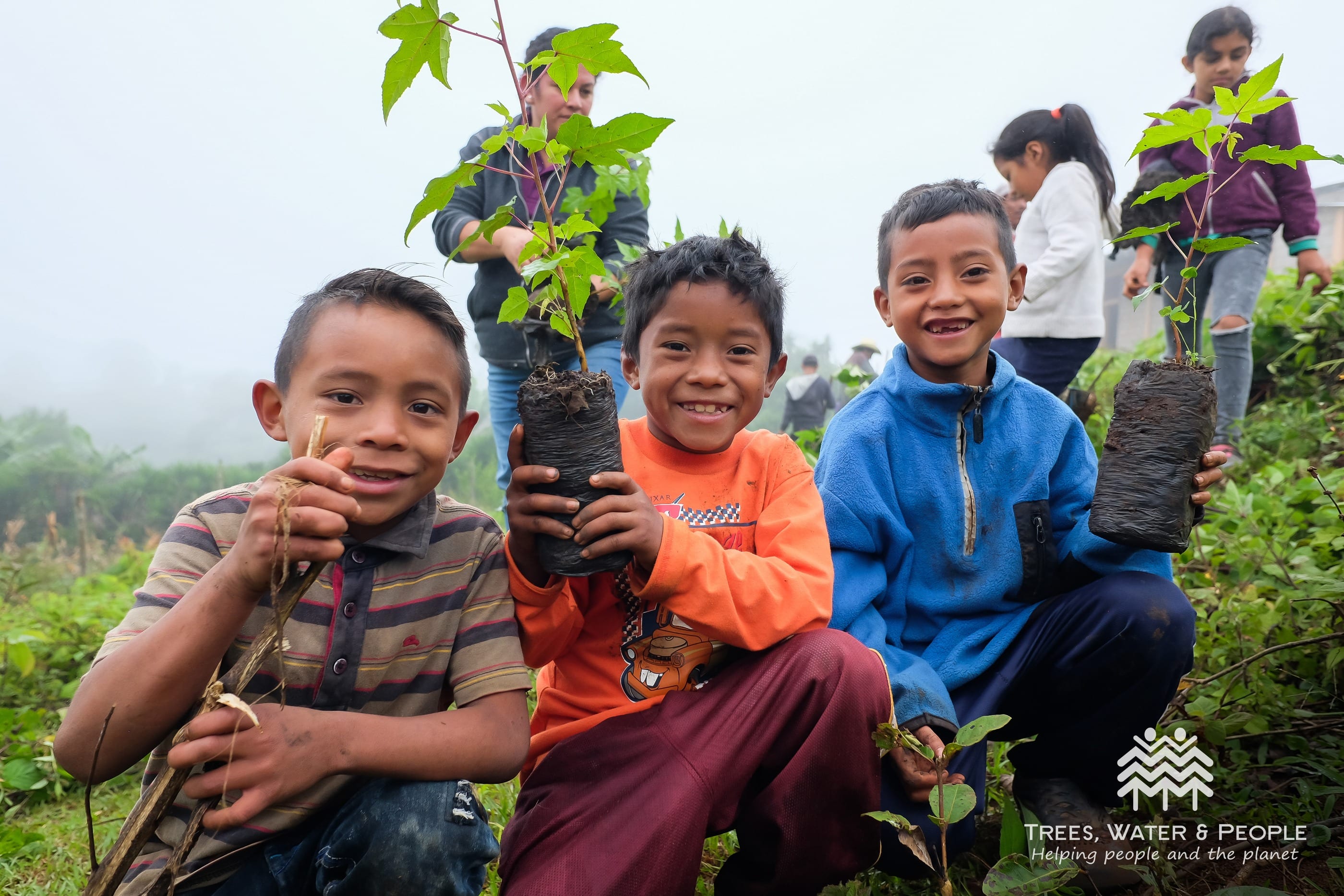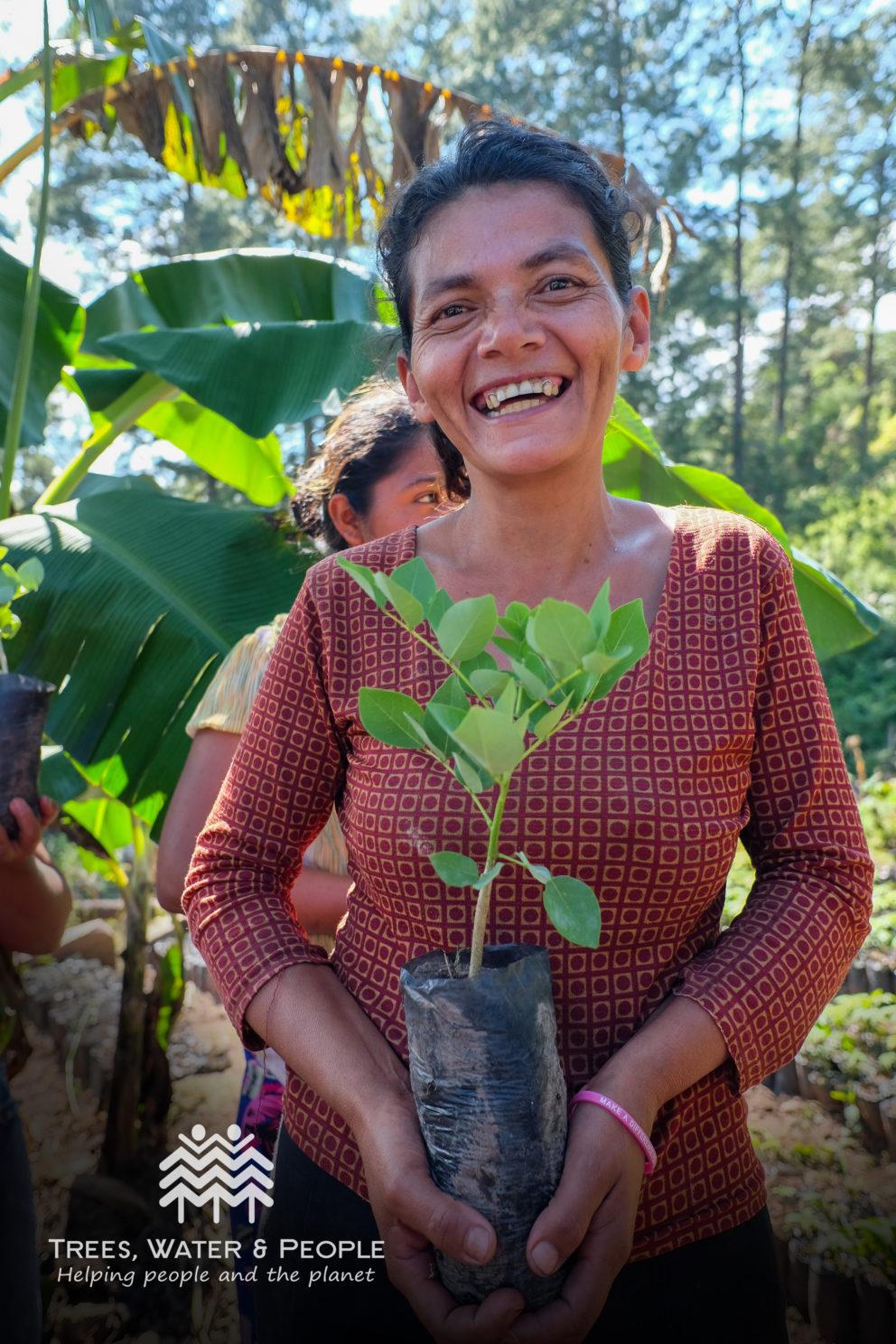
We believe that companies can commit to a higher standard for ourselves, our community, and our planet, and are proud to join the revolutionary and growing community of Certified B Corporations. As part of this commitment, Wanderlust offers a carbon offset option with your event ticket purchase. Fully 100 percent of this offset is donated to Trees, Water & People.
Learn more about our B Corp certification here , and read on for what this carbon offset is really all about.
In an era of greenwashing, “carbon offset” doesn’t have to be just another feel-good phrase.
The idea of carbon offsets, also called “carbon credits,” came from the 1997 Kyoto Protocol and places a monetary value on the cost of polluting the air. Essentially, the purchase of carbon offsets compensates for “bad” behavior by enacting “good” intentions. Break your diet with pie à la mode? That’s double spinach and a Zumba class for you.
Companies and governments looking to reduce their carbon footprint usually outsource the repair work by purchasing carbon offsets, and individuals can also purchase credits to offset travel or energy use. A single carbon credit is one megaton of carbon dioxide, a mass equal to 1,000 kilograms. Prices vary (and can be calculated on sites like terrapass.com). A flight from New York to LA costs around $16 in carbon offset, for example.
The money from the carbon offset purchases funds projects that either reduce or prevent greenhouse gas emissions elsewhere, usually in developing countries. There are several different categories of carbon offset projects, namely:
- Energy efficiency: water-saving plumbing, LED lights, upgrading appliances, etc.
- Renewable energies: wind, solar, hydro, etc. (the most popular choice)
- Intermediate technology: clean energy stoves, bike-powered pumps, etc.
- Reforestation: planting trees that pull CO2 from the air as they grow (most controversial due to the slow growth and difficulty of measuring oxygen output)
Supporters say that in addition to direct environmental benefits, carbon offset projects also provide “co-benefits” that improve the quality of life for the local population where projects are carried out. A 2014 study from the International Carbon Reduction and Offset Alliance found social, economic, and environmental benefits ranging from enhanced education to infrastructure development to job training in communities around the world.

There are more than 230 global companies that provide carbon offset services, either as project developers, wholesalers, traders, brokers, retailers or consultants—sometimes all. Most companies allow customers to designate which areas to focus their carbon offsets. Below are three US companies that approach carbon repair work differently:
Trees, Water & People (TWP)
A non-profit conservation organization founded in 1998 by two foresters, TWP helps communities “better manage the natural resources upon which their long-term well-being depends.” The organization is based in Colorado and conducts projects in El Salvador, Guatemala, Haiti, Honduras, Nicaragua, and within Native American reservations in the U.S. They’ve planted nearly six million trees to date, and their mobile education kit, called “SunMobile,” features hands-on learning projects and renewable energy and energy efficiency lessons that teach kids of all ages about environmental issues. Other TWP programs include: clean cookstoves, dry composting latrines, reforestation, solar energy, food sovereignty, tribal renewable energy, and environmental education.
Wanderlust has worked with TWP since 2014. Since then, more than 55,000 trees have been planted in Central America to offset carbon footprints. By 2027, it is expected that Wanderlust Festival will have banked nearly 14,000 tons of CO2e to be offset!
Terrapass
A for-profit social enterprise, Terrapass develops viable projects focusing on farm power, landfill gas capture, wind power, and abandoned coal mine methane capture. It was started in 2014 at the University of Pennsylvania by Dr. Karl Ulrich and 41 of his students. They cater to private aviation and donate 5 percent of related purchases to fund aviation technologies aimed at energy efficiency. Terrapass also developed a “digester” for a Washington dairy farm that converts manure—a by-product that produces large amounts of methane—into electricity. The project helps the dairy farmer financially, puts energy back into the local grid and saves 17,000 tons CO2 annually.
Carbonfund.org
Carbonfund.org, a non-profit carbon offset retailer and environmental education company, aims for a “zero-carbon world” through climate change education, carbon offsets/reductions, and public outreach. The company provides guest speakers to address climate change and carbon offsets for meetings or conferences. They also provide an opportunity for individuals to go carbon-free, offering targeted plans for lifestyle, vehicles, homes, travel, and events. The website lists carbon-free products, including building materials, electronics, and food, and you can even buy carbon offsets as a gift.
Projects that carbonfund.org supports include: wind power, renewable biomass, agricultural methane capture, landfill gas, small-scale hydro, energy efficiency, and forestry.
Every little bit helps, particularly when it comes to the environment. Considering a carbon offset donation when you travel or plan vacations can be an easy way to do your part. By adding a carbon offset to your Wanderlust ticket purchase, you are contributing to the overall reduction of CO2 emissions on the planet with TWP’s reforestation program. The suggested donation is $5 if you are driving or taking public transportation, but anything helps. No need to offset if you’re biking or walking to the event!
How do you contribute to helping the planet? Add your ideas and comments below.